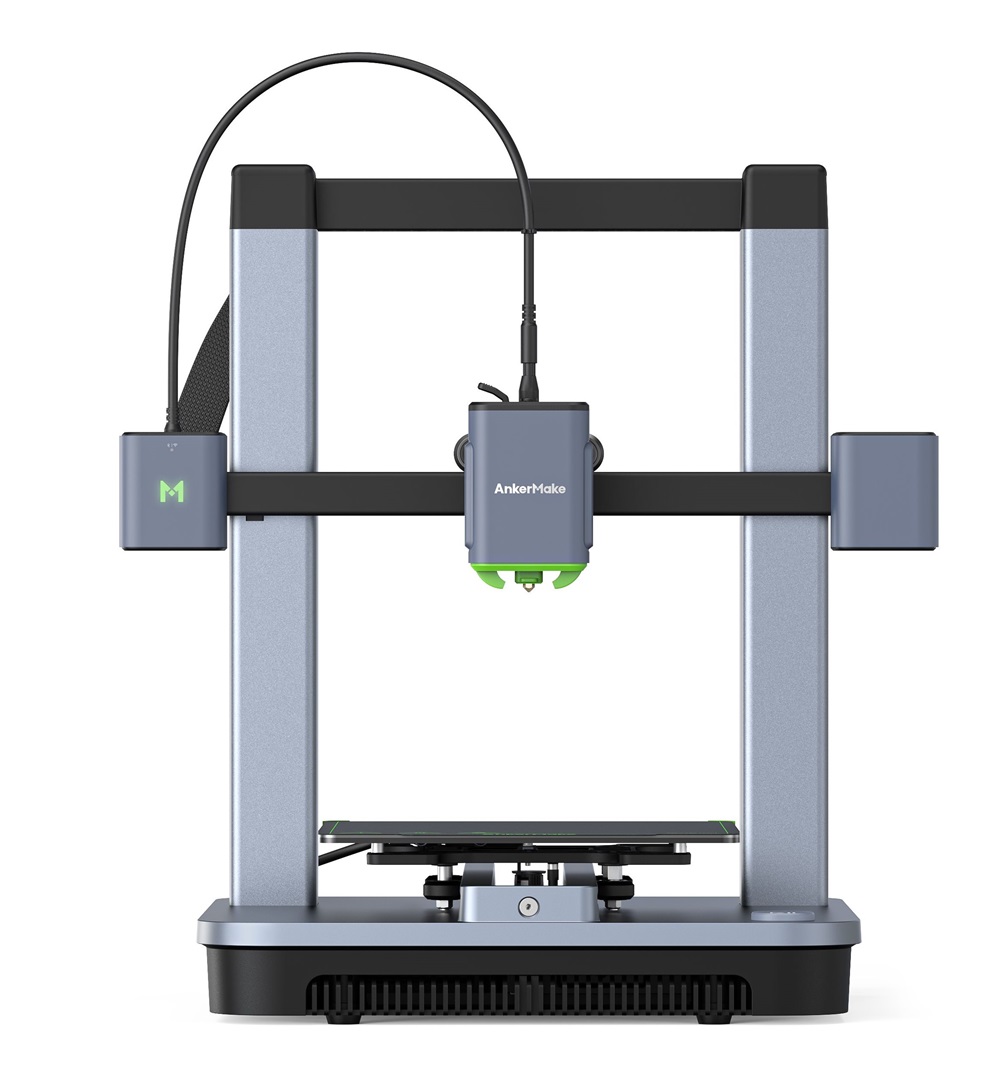Compare Comgrow T300 vs M5C
Comparison between the best 3D printers
Choose the best 3D printer at the best price. The cheapest 3D printers are here.
Buy a 3D printer here with 3D Fila.
 |
 |
|
| Model | Comgrow T300 |
M5C[BUY M5C] |
| Printing Material | Filament | Filament |
| Buy Filament for Sovol Comgrow T300 | Buy Filament forAnkerMake M5C | |
| Estimated price | $449,00 | $399,00 |
| Manufacturer | Sovol | AnkerMake |
| Release Year | 2024 | 2023 |
| Print Volume [mm] | 300x300x350 | 220x220x250 |
| Printer Size [mm] | 503x631x831 | 466x374x480 |
| Weight [kg] | 17 | 9,6 |
| Power Loss Recovery | YES | YES |
| Enclosed printer | NO | NO |
| Bed Leveling | Automatic | Automatic |
| Filament End Sensor | YES | YES |
| Bed type | Heated | Heated |
| Power supply system | Direct Drive | Direct Drive |
| Standard nozzle | 0,4 | 0,4 |
| Maximum Nozzle Temperature [°C] | 300 | 300 |
| Maximum Bed Temperature [°C] | 100 | 100 |
| Maximum printing speed [mm/s] | 600 | 500 |
| Filament holder | YES | YES |
| Camera for supervision | NO | NO |
| Recommended filaments | PLA, PETG, PET, TPU, PA, ASA, PC, PLA CE, PA-CF, PET-CF | PLA, PETG, TPU, ABS, PA, PLA-CF, PETG-CF, PA-CF |
| Recommended slicers | Bambu Studio, Super Slicer, Cura, Prusa Slicer, Orca Slicer | AnkerMake Studio (macOS, Windows), Simplify3D, Ultimaker Cura, PrusaSlicer |
| Maximum Resolution [mm] | 0,1 | 0,1 |
| Processor | 64 bit | |
| Display | Touchscreen 5'' | |
| Power Supply | 150 W | 350 W |
| Connectivity | USB, WiFi | Wi-Fi, USB-C, Bluetooth |
| Operating systems | Windows, Linux, Macbook | Windows, Linux e Macbook |
| Date of registration in the system | 2024-05-10 | 2024-09-11 |
| Release date | 2024 | 2023 |
| Extra features | The Sovol Comgrow T300 printer stands out for its technological innovations and advanced features. With a print size of 300mm300mm350mm, the T300 offers true linear rails on all axes, ensuring greater stability. Its Klipper-based intelligent core and 64-bit microcomputer increase printing speed and quality through pressure advancement and input shaping. The extruder with a gear ratio of 6.5:1 allows for more precise material control, optimizing the printing of flexible materials. In addition, the T300 features a rapid filament cooling system with a high-speed fan and a circular duct piece that improves cooling efficiency. With a 4.3-inch high-refresh rate touchscreen and an 81-point automatic leveling system, the T300 simplifies the preparation and execution of 3D prints. | The AnkerMake M5 printer stands out for its impressive print speed, reaching up to 500mm/s. It features AI print monitoring, an integrated camera for creating timelapses, auto-leveling bed with pressure sensor, direct extruder, flexible PEI-coated build plate, and Wi-Fi and USB-C connectivity. Assembly is quick and easy, and the printer is designed to deliver high print quality and ease of use. |
| Support for multiple colors and materials (AMS and CFS) | NO | NO |
Notes * |
||
| Cost-benefit | 8 / 10 | 7 / 10 |
| Hardware | 3.6 / 10 | 3.2 / 10 |
| Tela | . | . |
| Print volume | 4 / 10 | 3 / 10 |
| Performance | 5 / 10 | 4 / 10 |
| [BUY M5C] |
Conclusion |
| In comparing the Sovol Comgrow T300 and the AnkerMake M5C, both printers demonstrate a solid balance of features with a strong emphasis on performance and ease of use. The T300 excels with a larger print volume, technological innovations such as true linear rails, and a more sophisticated cooling system. Its advanced features cater well to users looking for precision, especially when working with flexible materials. On the other hand, the M5C showcases remarkable print speed capabilities and user-friendly elements such as AI monitoring and a flexible build plate, making it suitable for those prioritizing rapid production and straightforward assembly. The M5C's additional connectivity options also offer flexibility in how users can manage their prints. Considering the prices, while both printers provide similar cost-benefit ratings, the choice ultimately depends on specific needs. If larger print volumes and advanced stability technologies are essential, the T300 is a formidable choice. Conversely, if speed and user experience are the primary concerns, the M5C stands out as an efficient option. Overall, both printers are excellent investments for their respective strengths, and the decision should align with the user’s specific printing requirements and preferences. |

